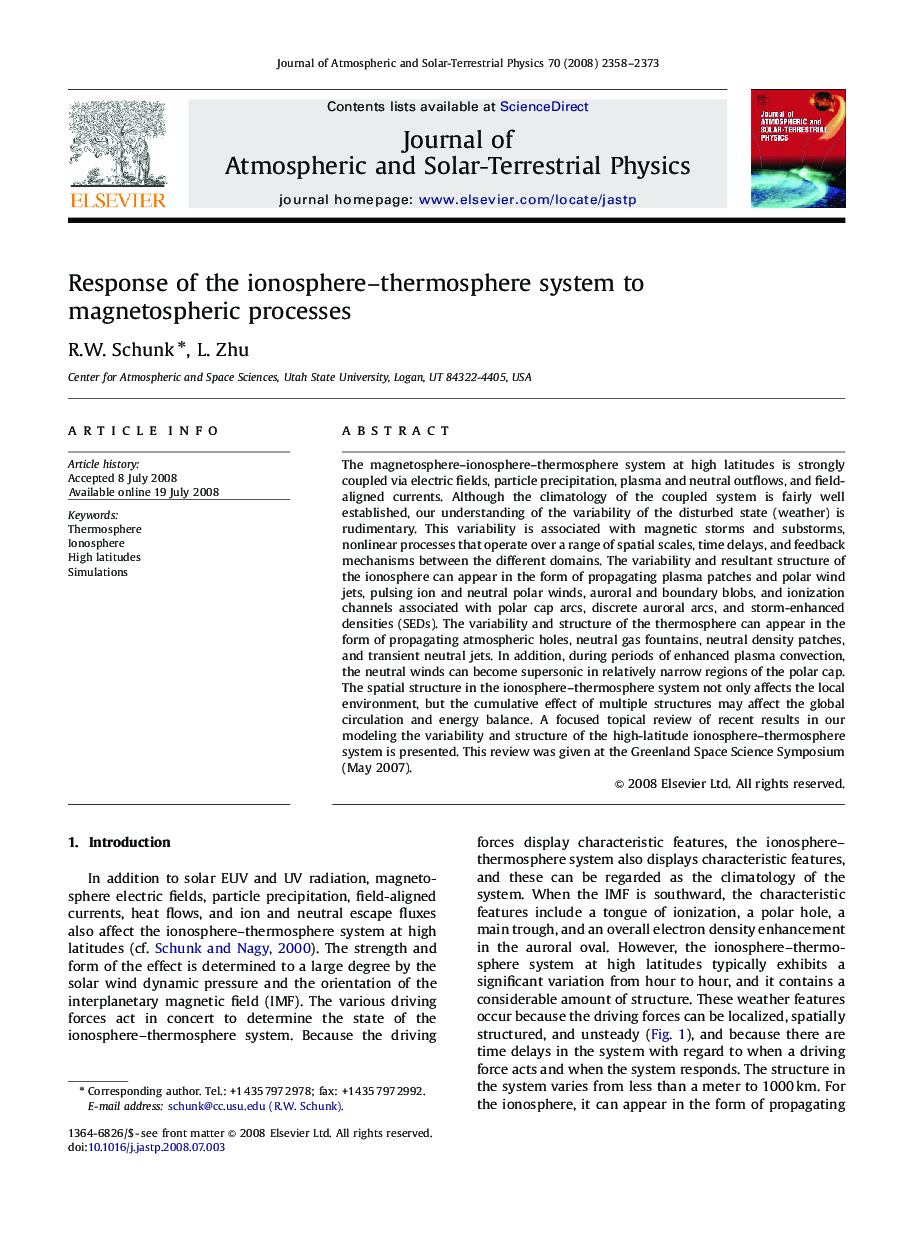| Article ID | Journal | Published Year | Pages | File Type |
|---|---|---|---|---|
| 1777706 | Journal of Atmospheric and Solar-Terrestrial Physics | 2008 | 16 Pages |
The magnetosphere–ionosphere–thermosphere system at high latitudes is strongly coupled via electric fields, particle precipitation, plasma and neutral outflows, and field-aligned currents. Although the climatology of the coupled system is fairly well established, our understanding of the variability of the disturbed state (weather) is rudimentary. This variability is associated with magnetic storms and substorms, nonlinear processes that operate over a range of spatial scales, time delays, and feedback mechanisms between the different domains. The variability and resultant structure of the ionosphere can appear in the form of propagating plasma patches and polar wind jets, pulsing ion and neutral polar winds, auroral and boundary blobs, and ionization channels associated with polar cap arcs, discrete auroral arcs, and storm-enhanced densities (SEDs). The variability and structure of the thermosphere can appear in the form of propagating atmospheric holes, neutral gas fountains, neutral density patches, and transient neutral jets. In addition, during periods of enhanced plasma convection, the neutral winds can become supersonic in relatively narrow regions of the polar cap. The spatial structure in the ionosphere–thermosphere system not only affects the local environment, but the cumulative effect of multiple structures may affect the global circulation and energy balance. A focused topical review of recent results in our modeling the variability and structure of the high-latitude ionosphere–thermosphere system is presented. This review was given at the Greenland Space Science Symposium (May 2007).
